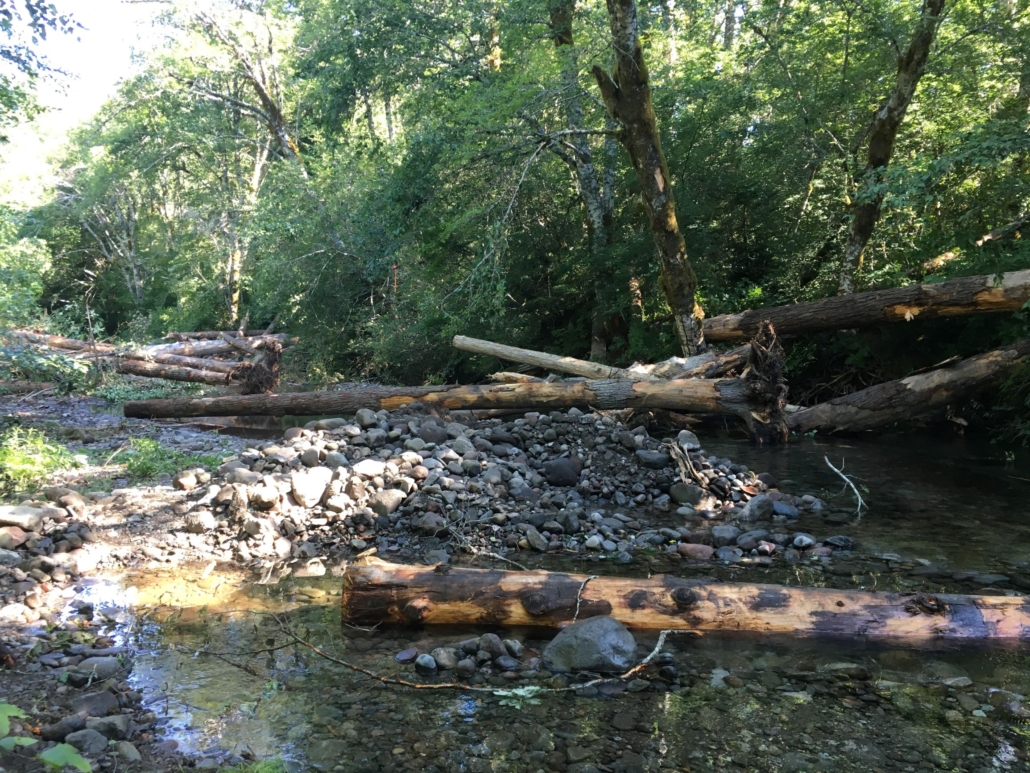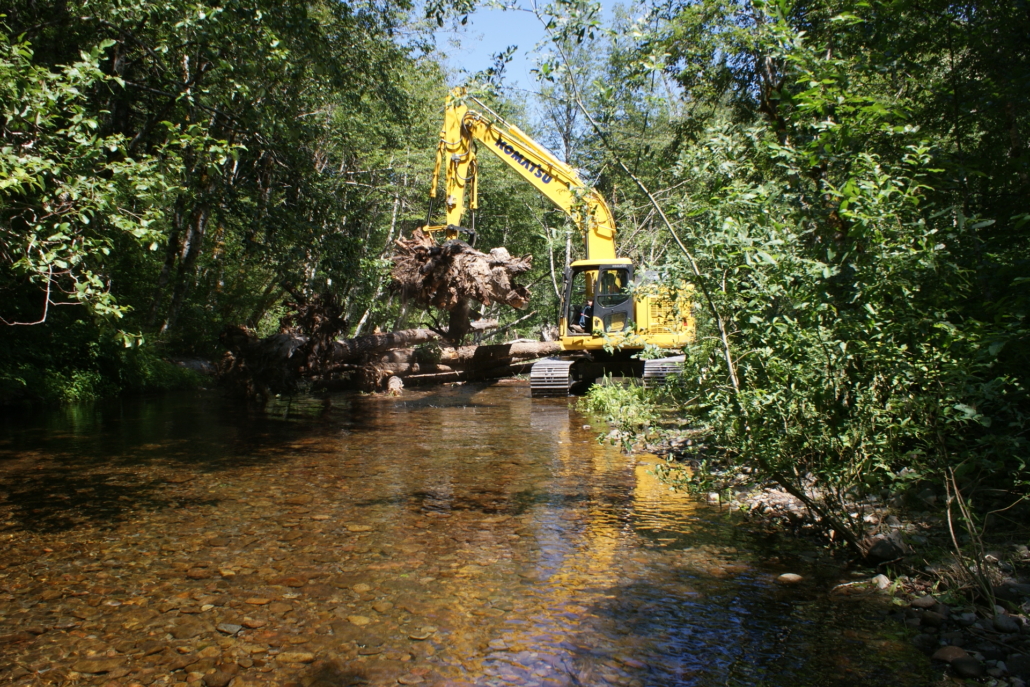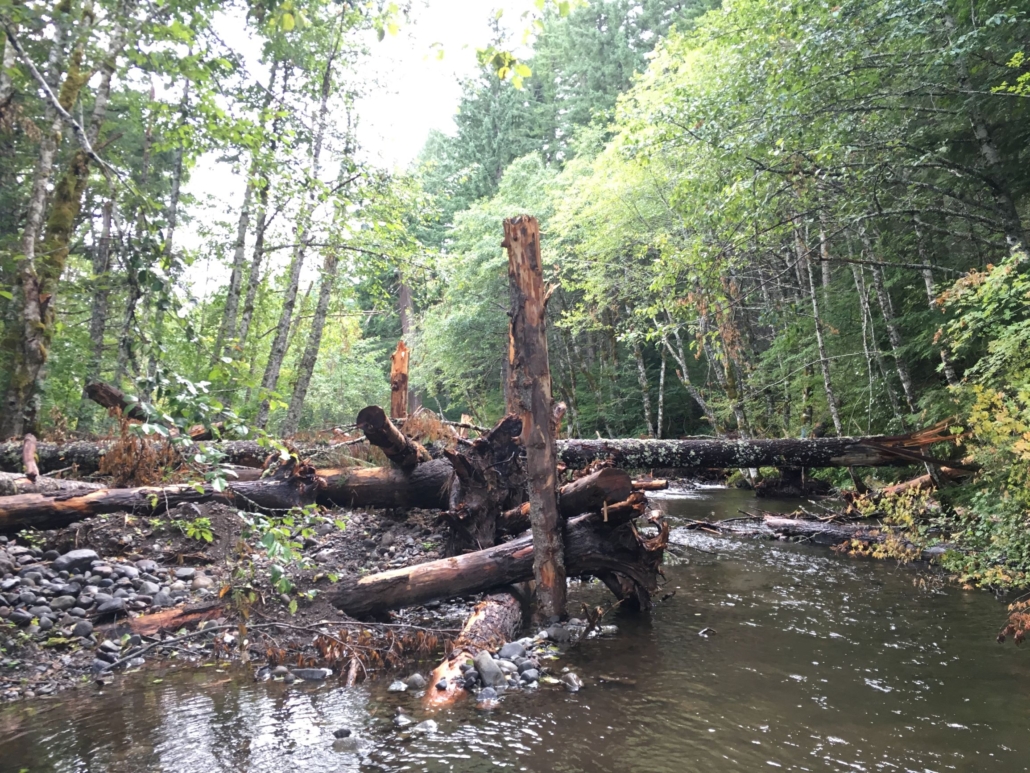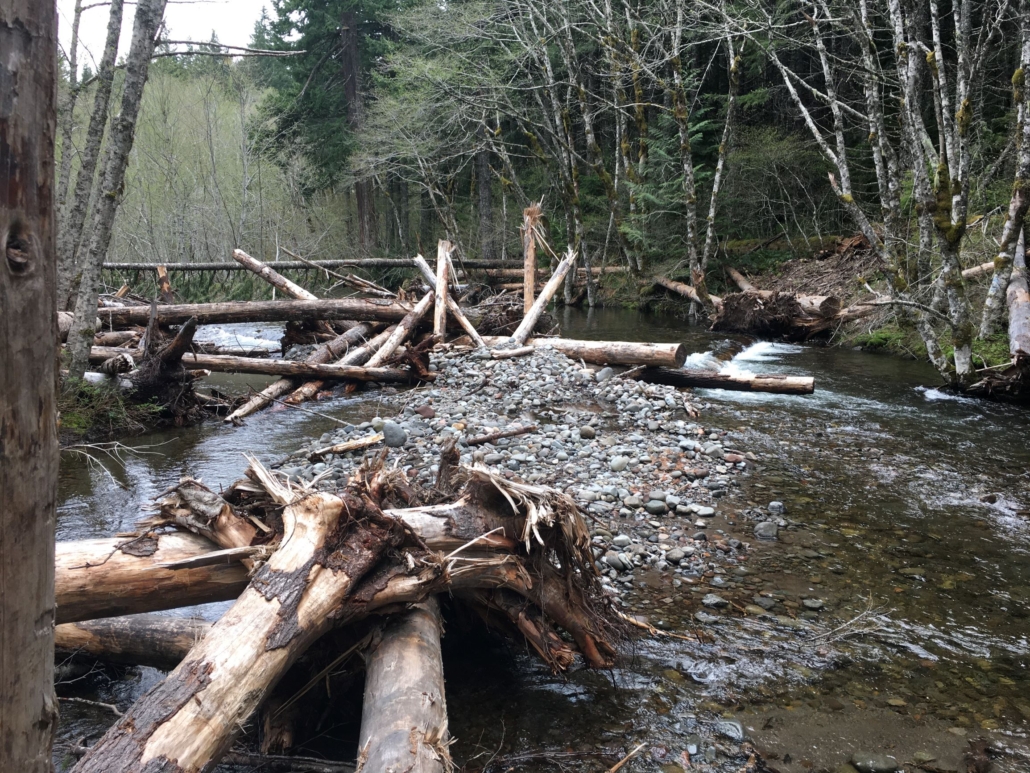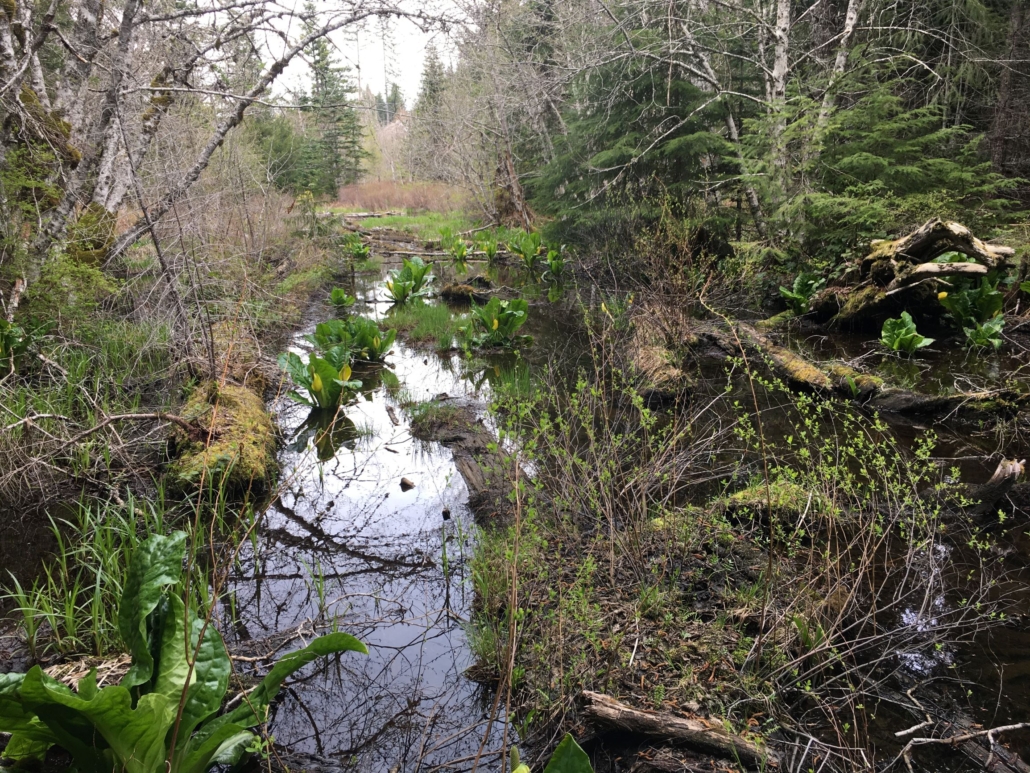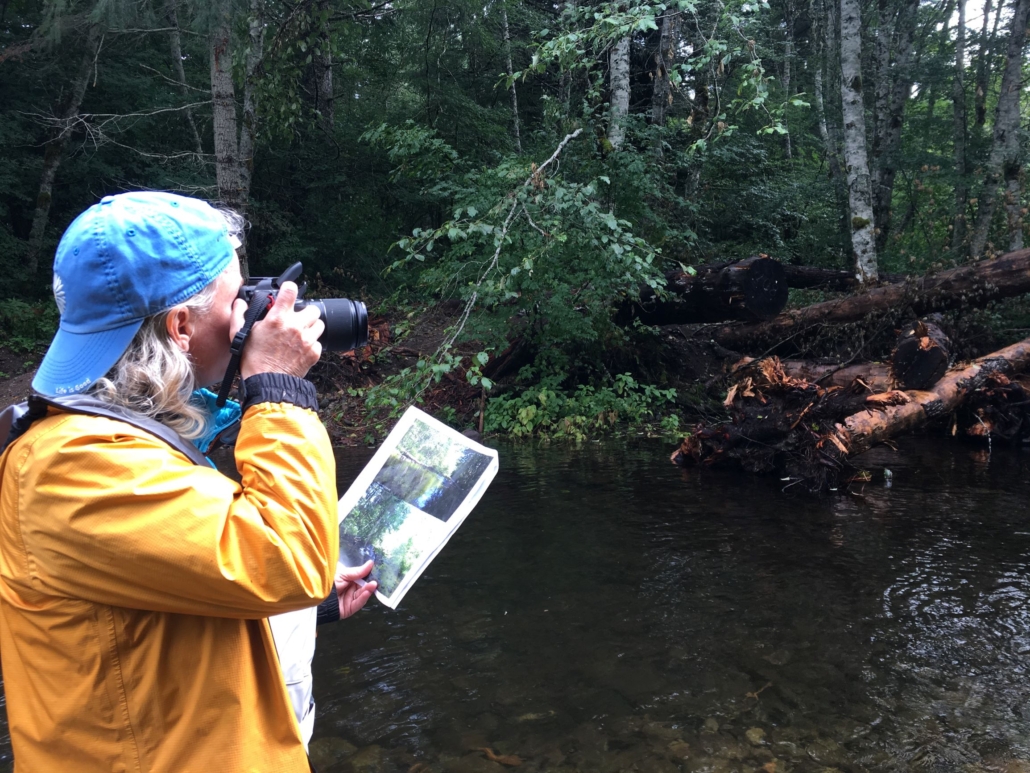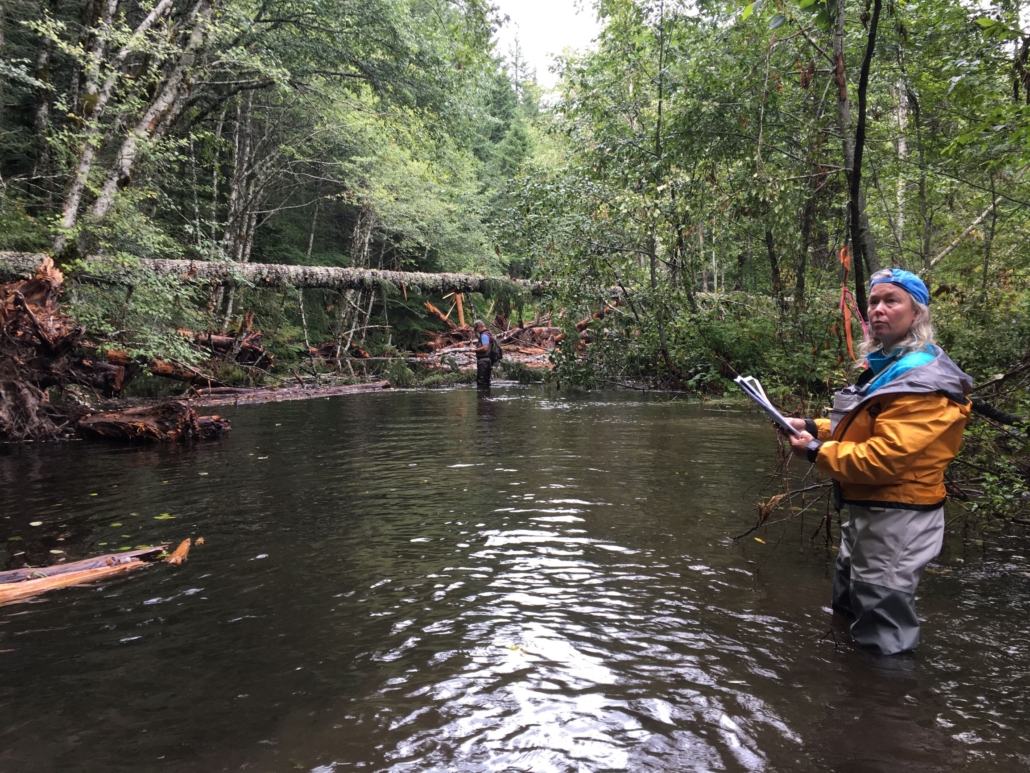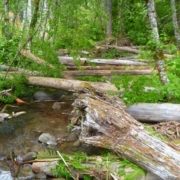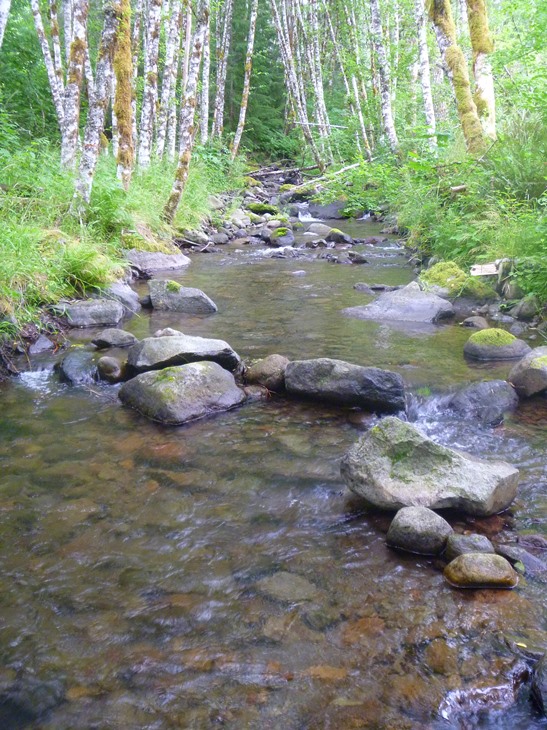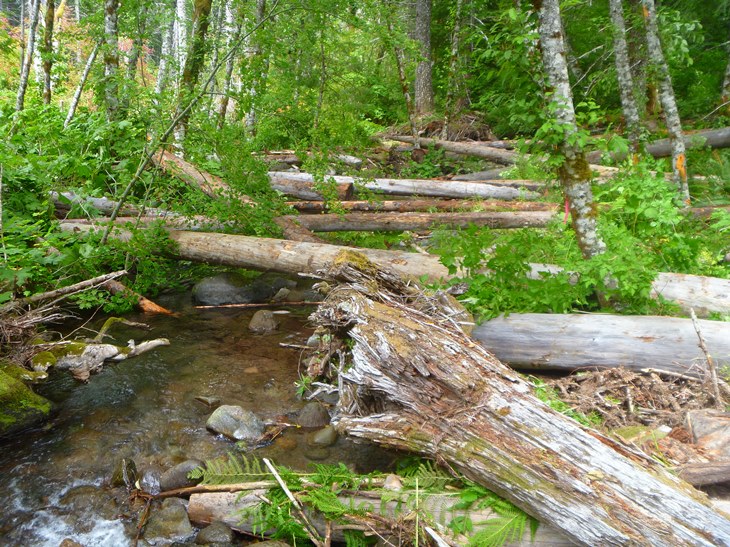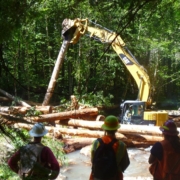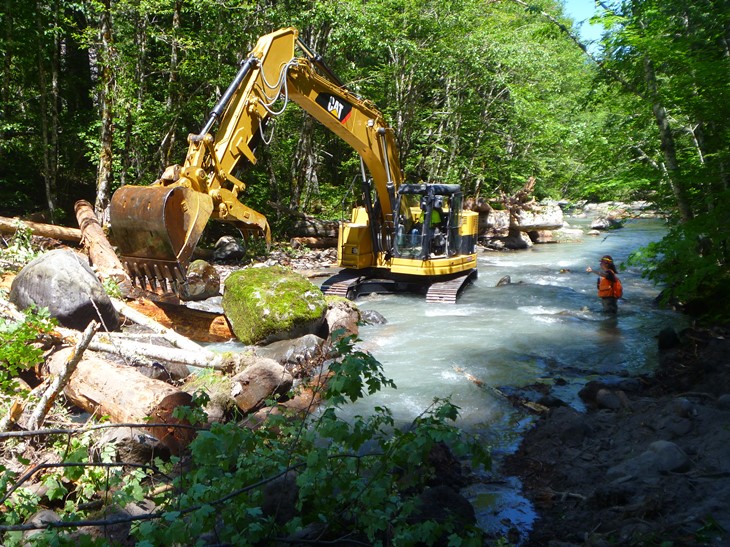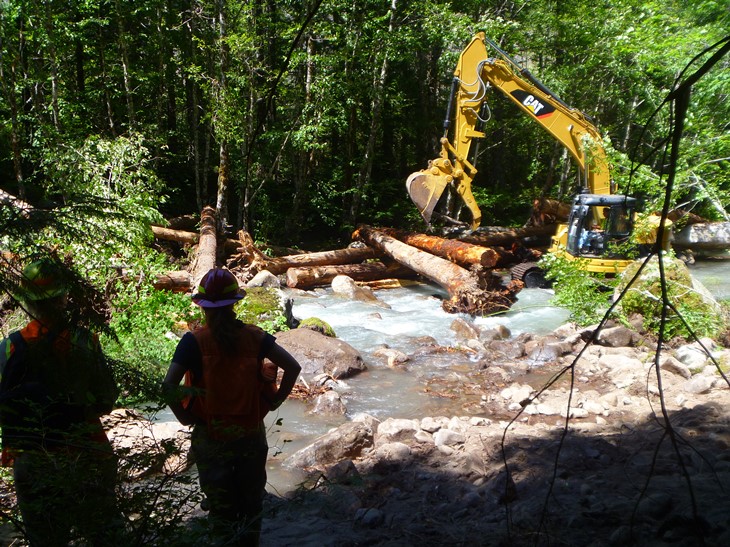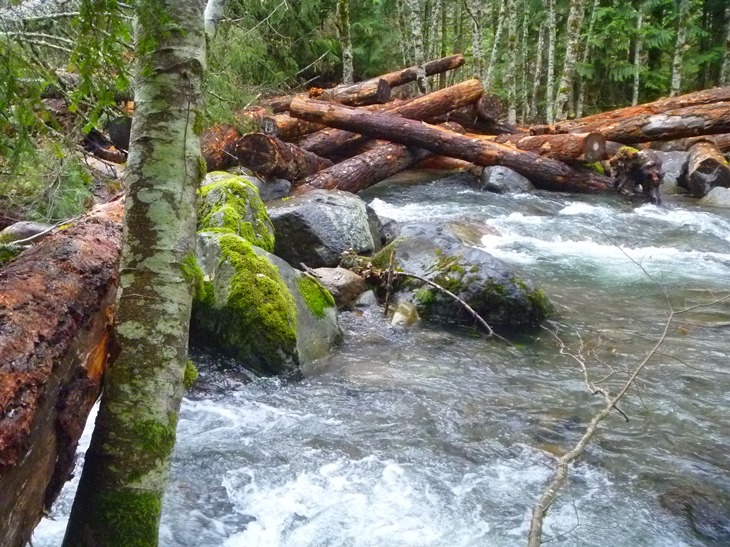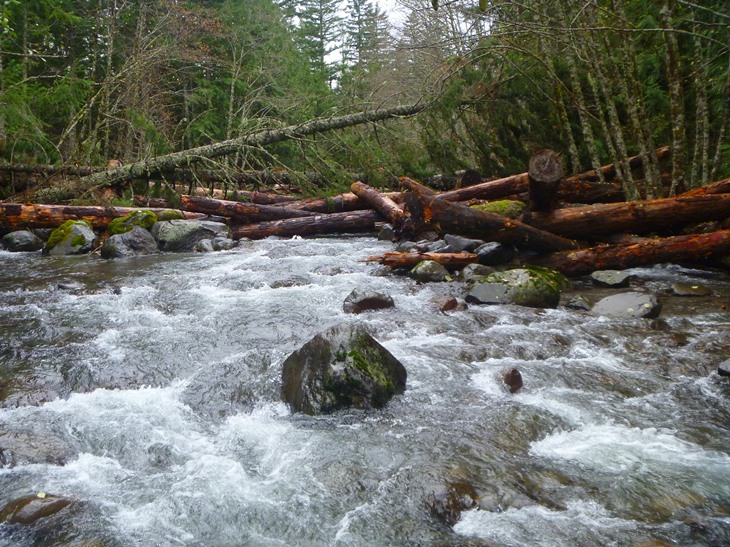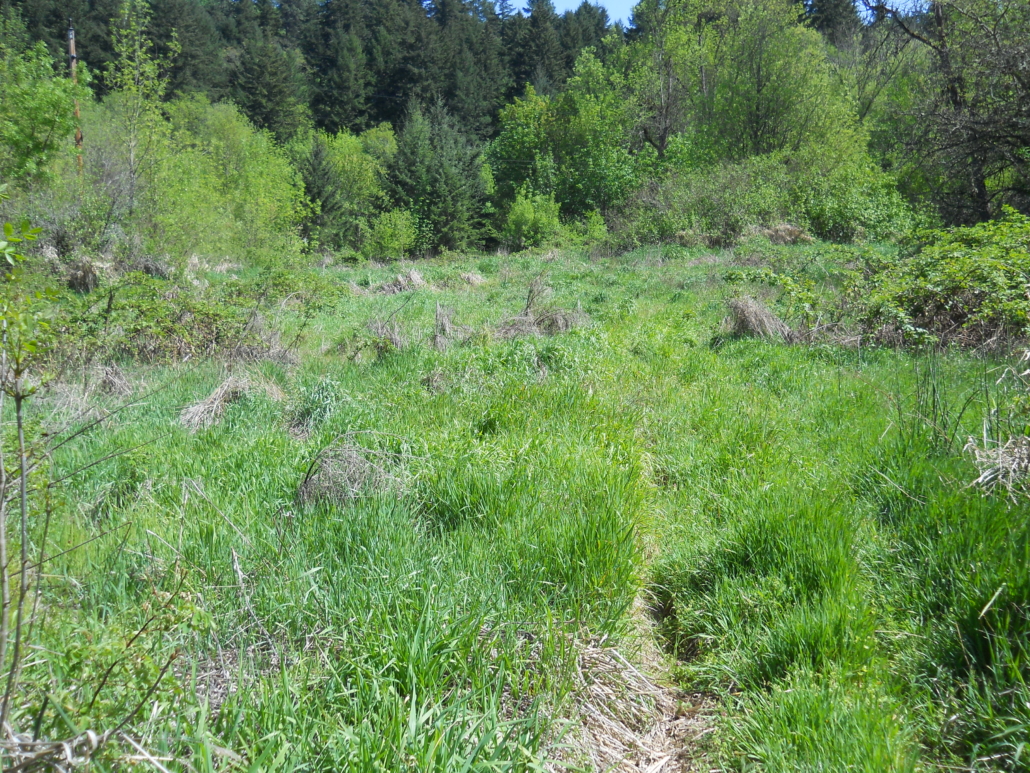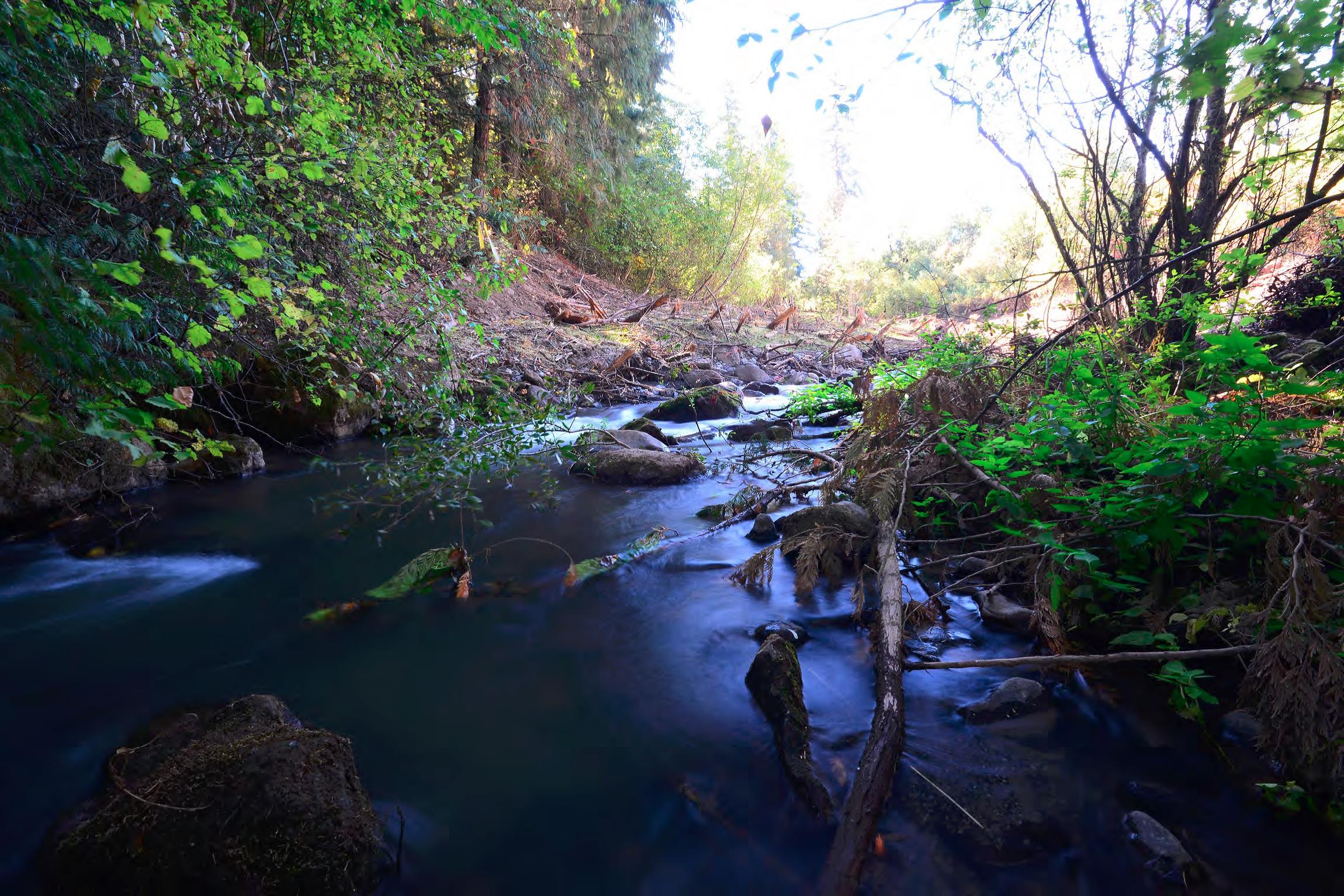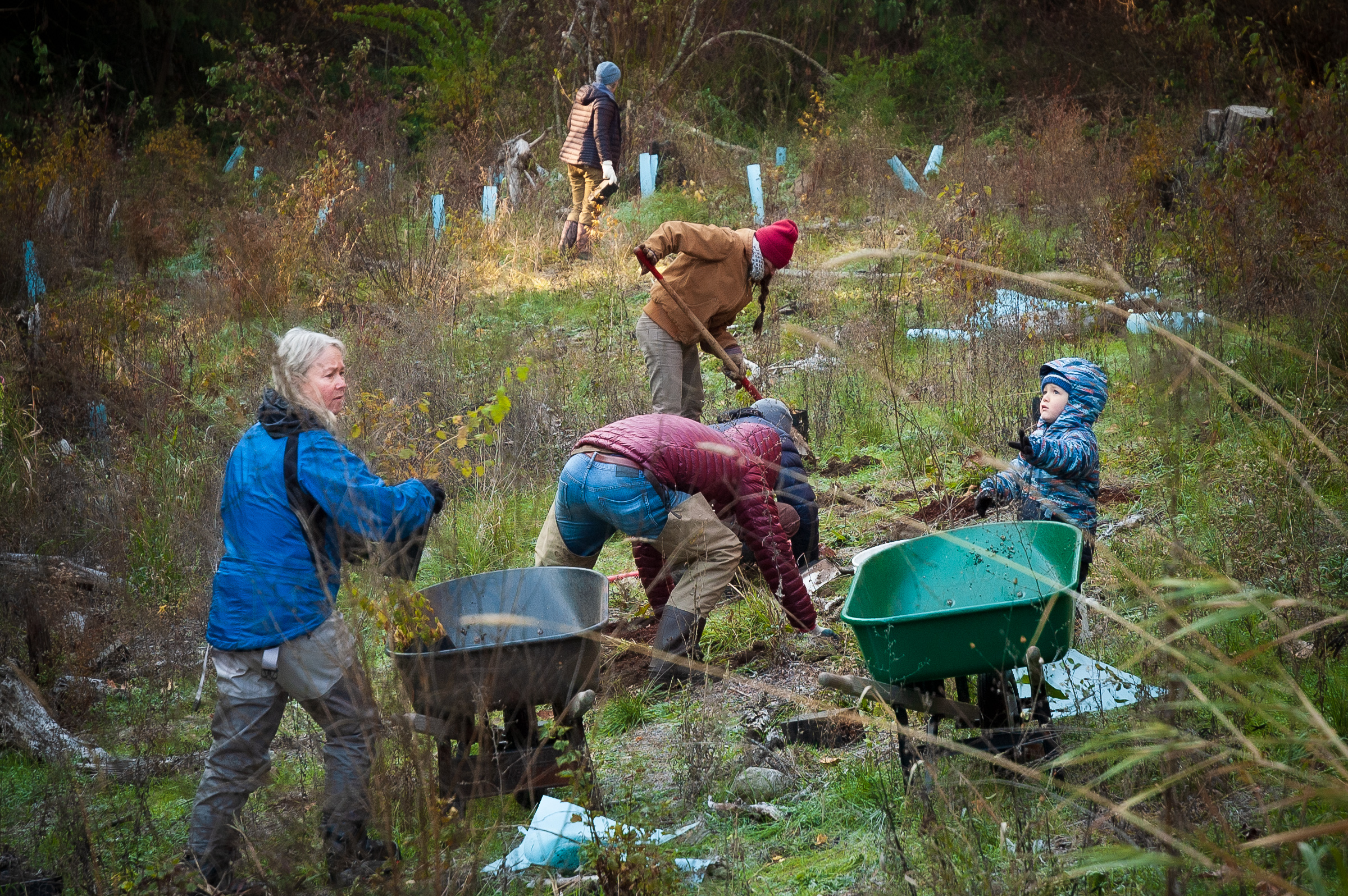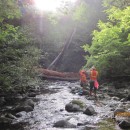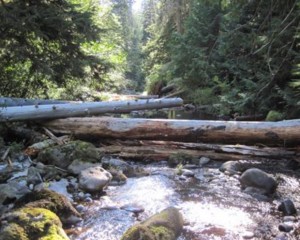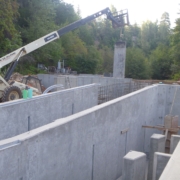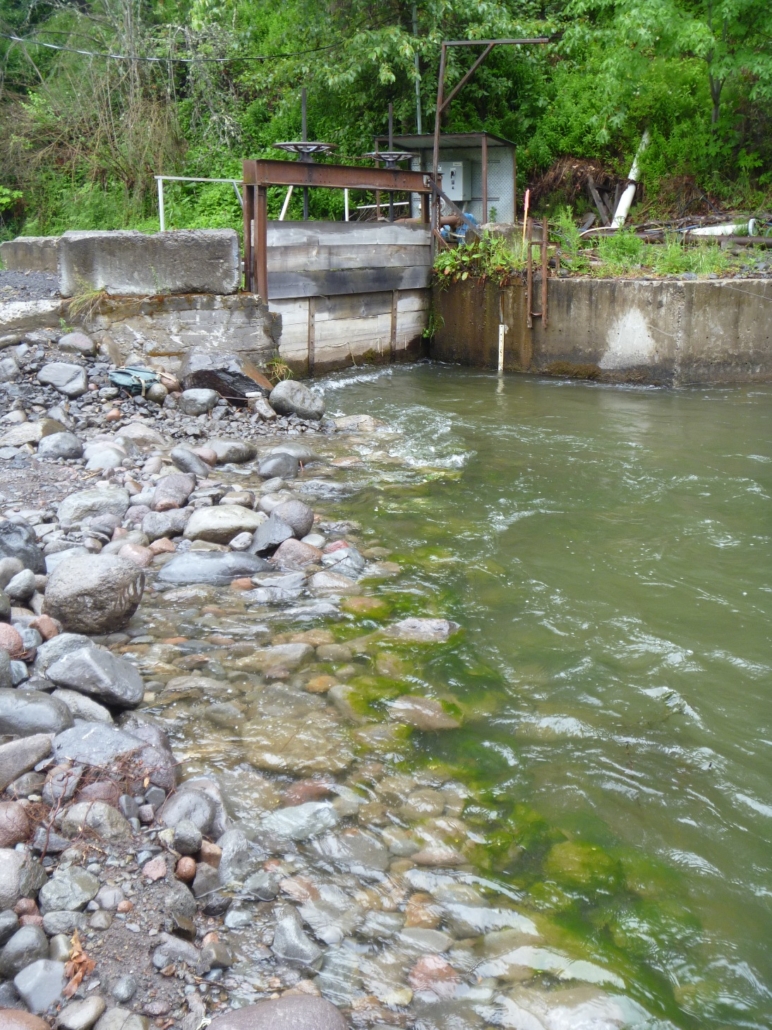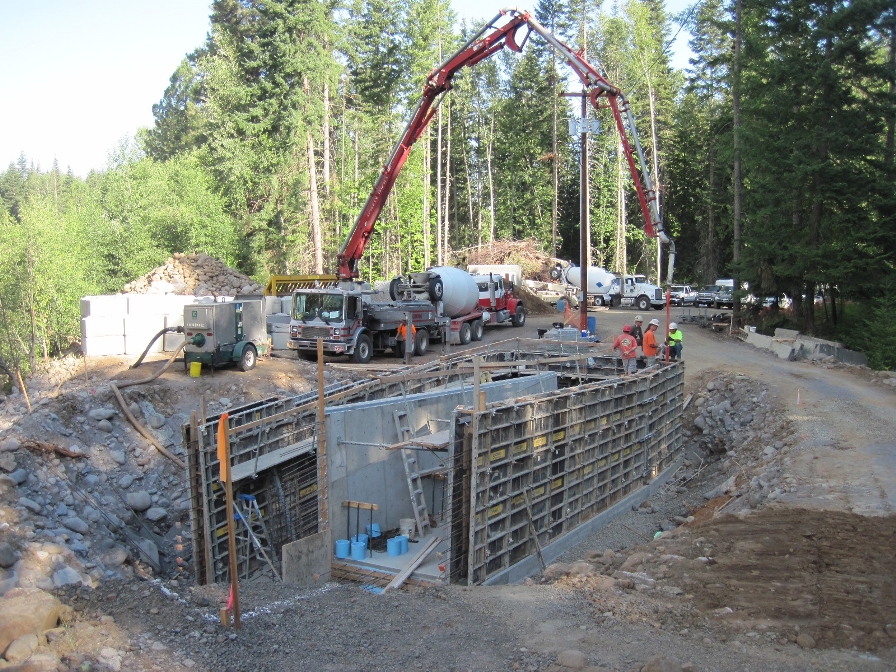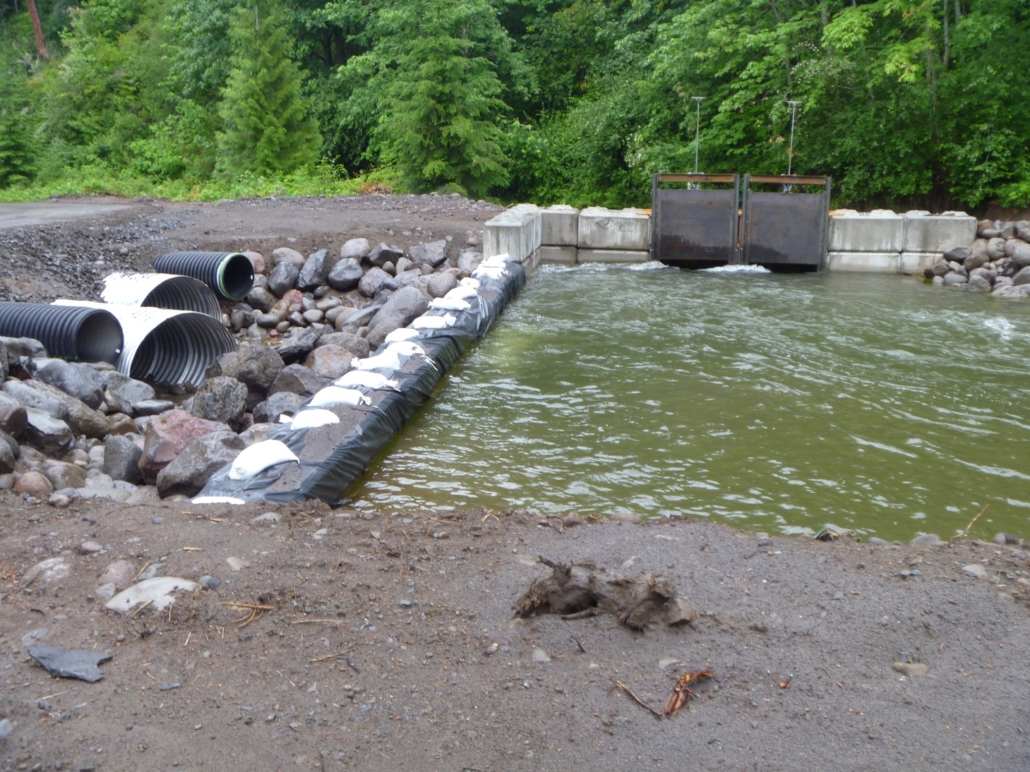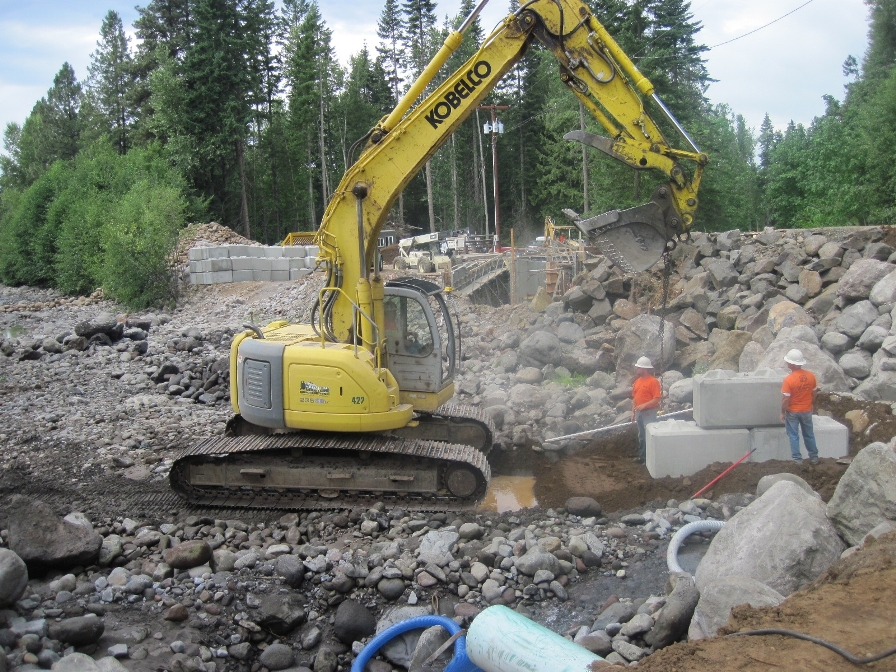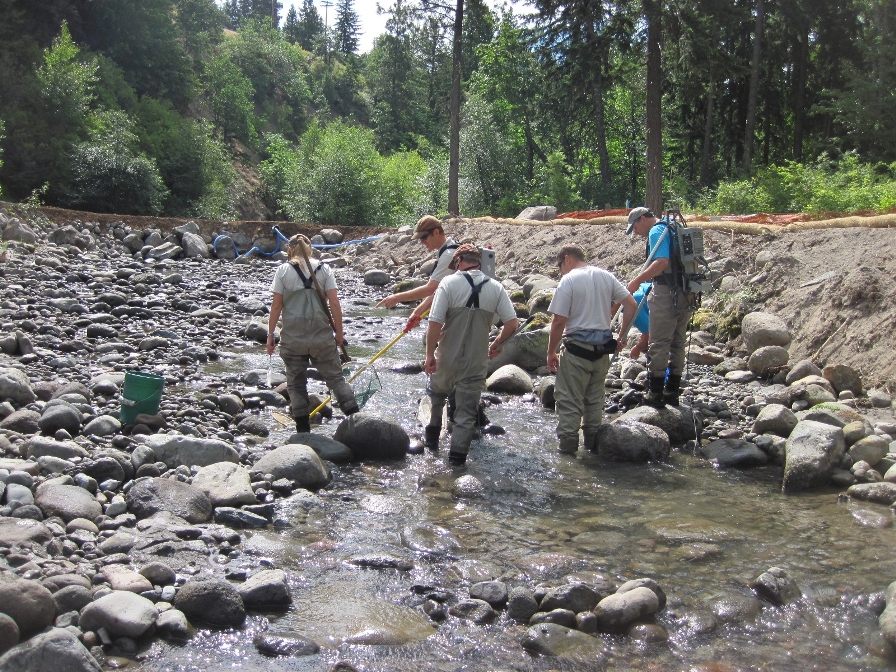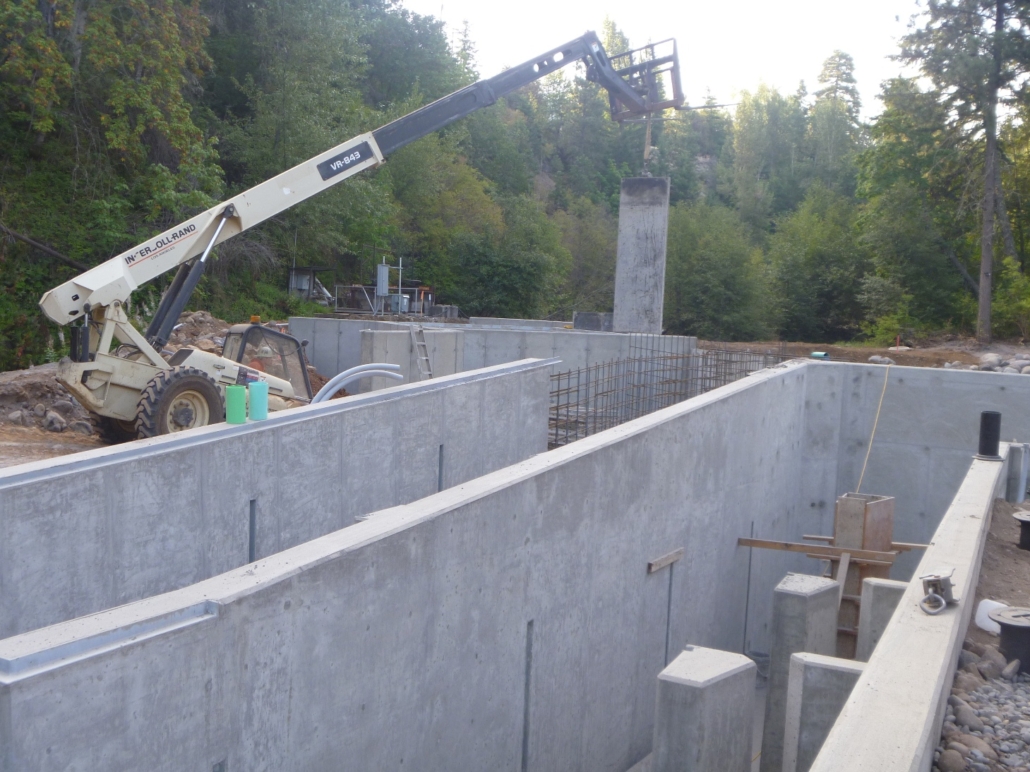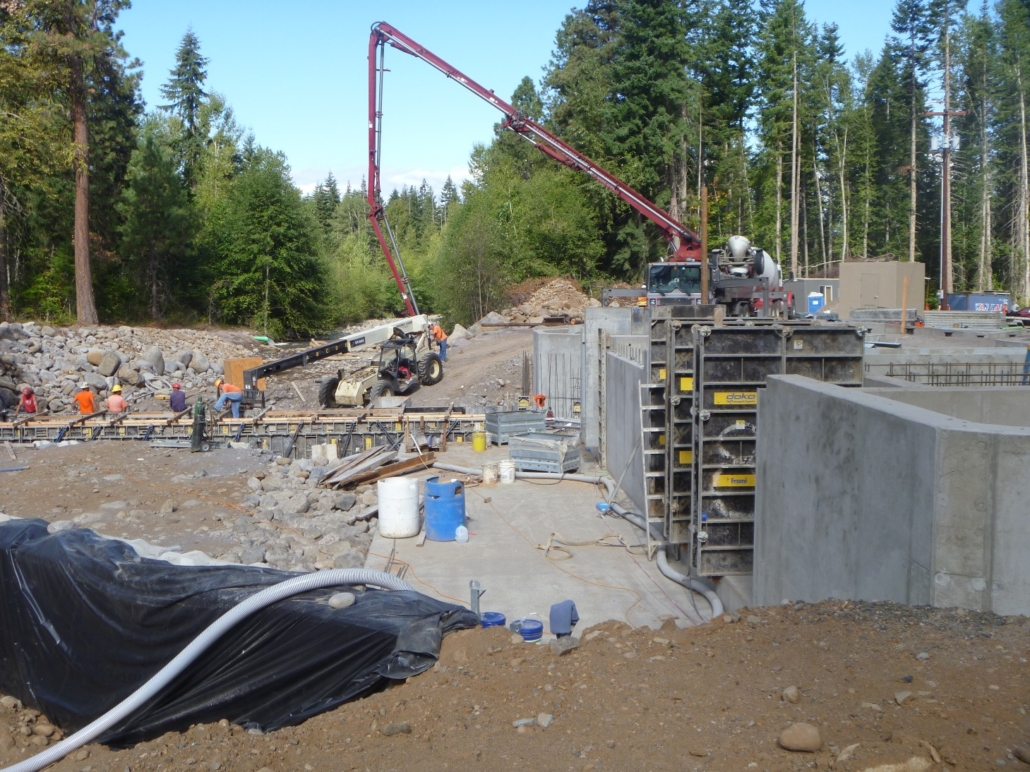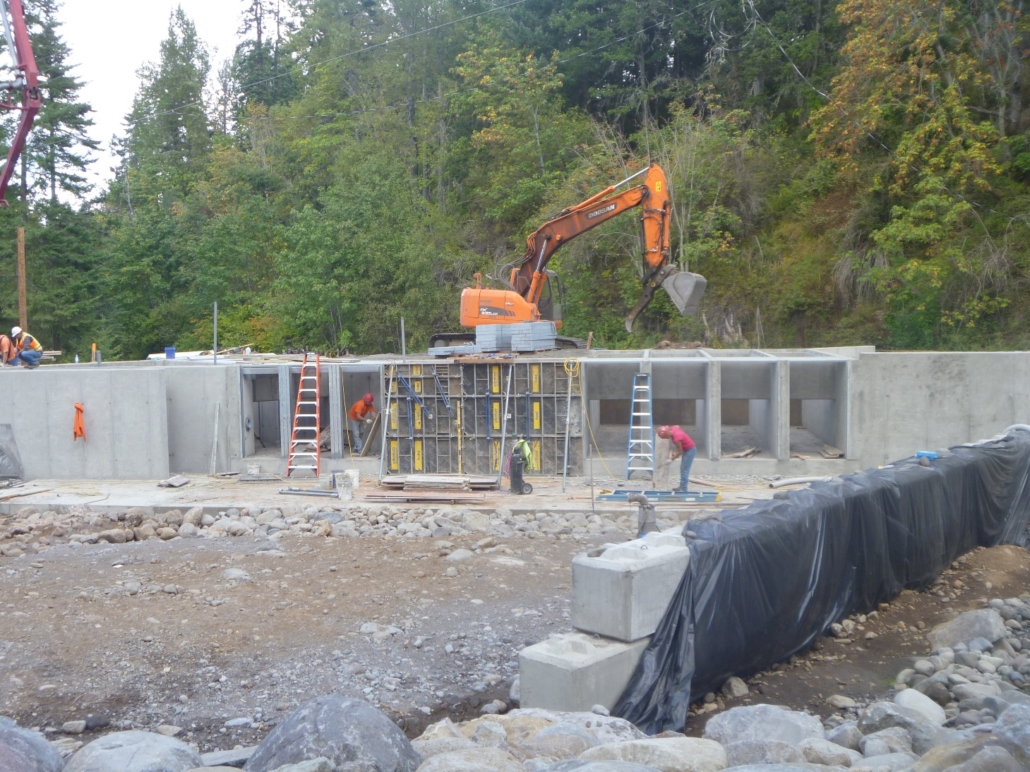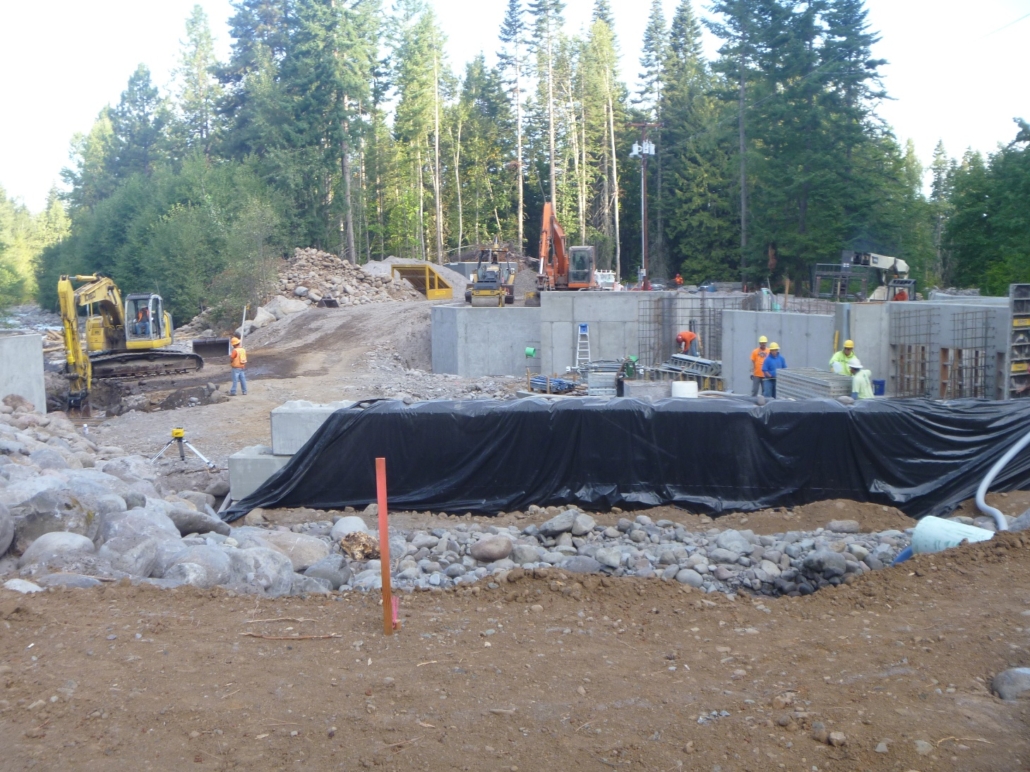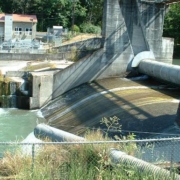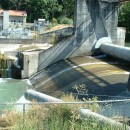West Fork at Jones Creek Habitat Restoration Project
The West Fork at Jones Creek project took place on 0.6-mile reach of the upper West Fork Hood River between the confluences with Jones Creek and Ladd Creek. The project is located on
United States Forest Service (USFS) land on the Mt. Hood National Forest. The Upper West Fork provides some of the best spring Chinook, coho, and summer steelhead habitat in the Hood River Watershed because of its abundant, clear, and cold water in the summer. However, past timber management practices, like splash damming and removal of large riparian conifers, have led to insufficient amounts of large instream wood and loss of connectivity between the main channel and historic side channels. These factors have decreased the amount and quality of salmon and steelhead habitat.
The U.S. Forest Service and Confederated Tribes of the Warm Springs have been actively restoring fish habitat on the Upper West Fork for several years. In 2016 and 2017, almost 1,000 pieces of large wood were placed in its channel and floodplain, and rock berms that had been created in the early 1900s were notched to allow the river to access its floodplain once again. More recently the Watershed Group has joined the team to assist with fundraising and project implementation. The long-term objectives of these projects are to improve spawning and rearing habitat by trapping and sorting spawning gravels, reconnecting side channels, creating new pools, increasing cover, and improving stream food web dynamics.
The goals of the West Fork at Jones Creek project were to improve and expand salmonid spawning and rearing habitat within the treatment reach. This was accomplished by placing approximately 380 pieces of large wood in 10-15 structures. Large wood structures will improve spawning habitat by trapping and sorting spawning gravels. They will improve rearing habitat by maintaining or reconnecting side channels, creating new pools, partitioning flow, increasing cover, and improving stream food web dynamics.
The project was managed by USFS staff. USFS provided the large wood and paid for its delivery to the site, and performed a modeling analysis of the design. Confederated Tribes of the Warm Springs developed the design for this project and assisted with implementation oversight. The Watershed Group staff assisted with contract administration, and is conducting pre- and post-project monitoring.


